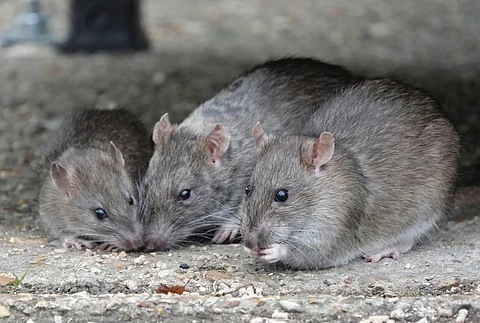

A new study has revealed that climate change is creating the perfect conditions for a surge in rat populations in major urban centres worldwide. The research, published in the journal Science Advances, highlighted how rising temperatures and urbanisation are driving the increase in rat numbers across cities.
Rat populations grew significantly in 11 out of 16 cities (69%) during the research period, the paper said. Cities such as Washington, DC; San Francisco; Toronto; New York City and Amsterdam saw the strongest increases, while Oakland, Buffalo, Chicago, Boston, Kansas City, and Cincinnati also experienced notable growth.
However, the trends were not uniform, with some cities such as Tokyo, Louisville, and New Orleans showing a decline in rat populations. New Orleans, in particular, recorded the greatest decrease during the study period.
The research found that cities experiencing higher temperatures, dense human populations, extensive urbanisation, abundant food sources, and reduced green spaces were more likely to see an increase in rat populations.
The study focused on two species of rats, Rattus norvegicus and Rattus rattus, which are globally distributed and are responsible for causing significant damage to infrastructure, agricultural yields, and food supplies. The total estimated cost of damage caused by these rodents in the United States alone is nearly $27 billion annually.
Globally, efforts to control rat populations — often referred to as the “war on rats”— cost an estimated $500 million each year, the study noted.
Rats are also known to carry over 50 zoonotic pathogens and parasites, which can be transmitted to humans, raising serious public health concerns. “Associated diseases include leptospirosis, hantavirus pulmonary syndrome, murine typhus, and bubonic plague,” the study noted.
Lead author Jonathan Richardson and his colleagues reached out to city governments across the United States to gather data on rat populations, temperature averages, human population trends, and property development.
Due to the limited availability of rat data from some cities, the researchers expanded their study to 16 cities where municipal authorities conducted inspections, trapping, and kept records of rat sightings for an average of 12 years.
The study found that temperature played a crucial role in the variation of rat population trends. Researchers discovered that 40.7 per cent of the variation in rat numbers was linked to increases in average temperatures compared to long-term city temperature averages. Cities that experienced more significant temperature rises showed a corresponding increase in rat sightings.
“As with most small mammals, rat activity is constrained by colder temperatures. When temperatures decrease, the thermal physiology of rodents means that they either have to remain sheltered longer or forage more food to maintain thermal homeostasis via higher metabolism,” the paper stated.
In northern latitudes, R. norvegicus showed strong seasonality in abundance, activity, and reproduction, with peak numbers in late summer and lower populations during winter. In tropical and subtropical climates, however, rats showed minimal seasonal variation. For instance, rats in New York City demonstrated consistent seasonal cycles, with population peaks in late summer and dips during winter.
The study also noted that cities with less vegetation saw greater increases in rat numbers, which may be linked to food availability and habitat preferences.
To address this growing issue, the researchers called for a collective global effort to tackle climate change and implement aggressive strategies to control rat populations. Recommendations included modern refuse and food waste management practices, such as rodent-proof dumpsters, frequent garbage collection, and food waste diversion programmes.
The study also suggested enforcing building codes that exclude rodents, timely removal of materials that could serve as rat shelters, and implementing both lethal and non-lethal control methods.
“For example, the New Orleans department tasked with rodent control conducts proactive surveillance of rat activity and has increased efforts to engage other city departments and residents in education and control options. Tokyo has high cultural expectations of hygiene that promote sanitation standards, which has been amplified by social networking/media platforms where people can quickly publicise unsanitary conditions and rats they see in the city,” the study said.